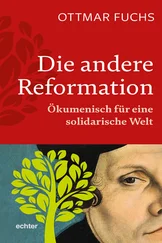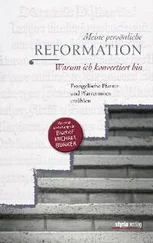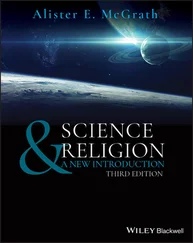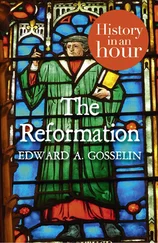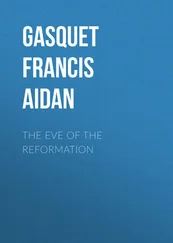So what was “Anabaptism”? The term “Anabaptist” was invented by Zwingli (the word literally means “re-baptizers”) following the rise of the movement in Zurich, and refers to what was perhaps the most distinctive aspect of Anabaptist practice – the insistence that only those who had made a personal public profession of faith should be baptized. Anabaptism seems to have first arisen around Zurich, in the aftermath of Zwingli’s reforms within the city in the early 1520s. It centred on a group of individuals (notably Conrad Grebel, c.1498–1526) who argued that Zwingli was not being faithful to his own reforming principles. He preached one thing, and practiced another.
Although Zwingli had made faithfulness to the sola scriptura (a Latin slogan meaning “by Scripture alone”: see pp. 126–8) principle a cornerstone of his ministry, Grebel argued that Zwingli was inconsistent in its application. Grebel criticized Zwingli for retaining a number of practices – including infant baptism, recognizing a close link between the church and the magistracy, and permitting Christians to engage in warfare – which were not sanctioned or ordained by Scripture. For Grebel and other radical thinkers, thinking and living sola scriptura demanded that reformed Christians should believe and practice only what was explicitly taught in Scripture. Zwingli was alarmed by this, seeing it as a destabilizing development which threatened to cut the Reformed church at Zurich off from its historical roots and its continuity with the Christian tradition of the past.
The Anabaptists had good reason to accuse Zwingli of compromise. In 1522, Zwingli wrote a work known as Apologeticus Archeteles , in which he recognized the idea of a “community of goods” as an authentic Christian ideal. “No-one calls any possessions his own,” he wrote; “all things are held in common.” On this point, Zwingli and the Anabaptists seemed to be in fundamental agreement. But by 1525, Zwingli had changed his mind, and come round to the idea that private property was not such a bad thing after all.
Although Anabaptism arose in Germany and Switzerland, it subsequently became influential in other regions, such as the Lowlands. The movement produced relatively few theologians (the three most significant are generally agreed to be Balthasar Hubmaier (c.1480–1528), Pilgram Marbeck (c.1495–1556), and Menno Simons (1496–1561)). This failure partly reflects the forcible suppression of Anabaptism by the secular authorities, following the Anabaptist takeover of the city of Münster in 1534, which was widely seen as a threat to law and order throughout western Europe. Yet Anabaptism’s failure in this respect may also reflect the fact that the movement did not have any substantial shared theological basis.
A number of common elements can be discerned within the various strands of the movement: a general distrust of external authority; the rejection of infant baptism in favour of the baptism of adult believers; the common ownership of property; and an emphasis upon pacifism and non-resistance. To take up one of these points: in 1527, the governments of the cities of Zurich, Berne, and St. Gallen accused the Anabaptists of believing “that no true Christian can either give or receive interest or income on a sum of capital; that all temporal goods are free and common, and that all can have full property rights to them.”
It is for this reason that “Anabaptism” is often referred to as the “left wing of the Reformation” (Roland H. Bainton) or the “radical Reformation” (George Hunston Williams). For Williams, the “radical Reformation” was to be contrasted with the “magisterial Reformation,” which he broadly identified with the Lutheran and Reformed movements. These terms have gained wide acceptance within Reformation scholarship.
Probably the most significant document to emerge from the Anabaptist movement is the Schleitheim Confession, drawn up by Michael Sattler (1490–1527) on February 24, 1527. The Confession takes its name from the small town of that name in the canton of Schaffhausen. Its function was to distinguish Anabaptists from those around them – supremely from what the document refers to as “papists and antipapists” (that is, unreformed Catholics and magisterial evangelicals). In effect, the Schleitheim Confession amounts to “articles of separation” – that is to say, a set of beliefs and attitudes which distinguish Anabaptists from their opponents inside and outside the Reformation, and function as a core of unity, whatever their other differences might be.
This term is often used to refer to the revitalization of Catholicism, which is often thought to begin in the period following the opening of the Council of Trent (1545). In older scholarly works, this movement is often referred to as the “Counter-Reformation”: this term refers primarily to the strategies that the Catholic church developed as a means of combating the Protestant Reformation. The Catholic church, however, countered the threat from Protestantism partly by reforming itself from within, in order to address and remove any legitimate grounds of Protestant criticism. In this sense, the movement is to be seen both as a reformation of the Catholic church, as well as a critique of the Protestant Reformation.
The same concerns underlying the Protestant Reformation in northern Europe were channeled into the renewal of the Catholic church, particularly in Spain and Italy. The Council of Trent, the foremost feature of the Catholic Reformation, clarified Catholic teaching on a number of confusing matters, and introduced much needed reforms in relation to the conduct of the clergy, ecclesiastical discipline, religious education, and missionary activity. The movement for reform within the Catholic church was greatly stimulated by the reformation of many of the older religious orders and the establishment of new orders (such as the “Society of Jesus,” often referred to as “the Jesuits”). The more specifically theological aspects of the Catholic Reformation will be considered in this textbook primarily in relation to its teachings on Scripture and tradition, justification by faith, the church and the sacraments.
As a result of the Catholic Reformation, many of the abuses which originally lay behind the demands for reform – whether these came from humanists or Protestants – were removed. By this stage, however, the Protestant Reformation had reached a point at which the mere removal of malpractices and abuses was no longer sufficient to defuse or reverse the situation: the demand for the reformation of doctrine, religious ideology, and the church was now regarded as an essential aspect of the Protestant–Catholic controversies. This point highlights the need to consider the religious ideas lying behind the “magisterial Reformation,” which became of increasing importance to the Protestant–Catholic debate as the sixteenth century progressed.
There is intense scholarly interest in the English Reformation, reflecting its own distinct agendas and concerns. Although the sixteenth-century English Reformation under Henry VIII bore little relation to its German equivalent, Luther was a significant influence on the development of the English Reformation, even though it ultimately took a course which diverged significantly from that mapped out by Luther. The influential English historian F. W. Powicke (1879–1963) once remarked that “the one thing that can be said about the Reformation in England is that it was an act of State.” For Powicke, “the Reformation in England was a parliamentary transaction.” 3There is enough truth in Powicke’s generalization to help us identify a key difference between the German and English Reformations.
Читать дальше
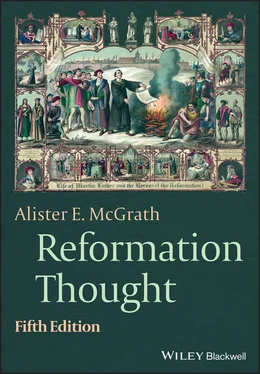
![О Генри - Возрождение Каллиопы [The Reformation of Calliope]](/books/407342/o-genri-vozrozhdenie-kalliopy-the-reformation-of-c-thumb.webp)

